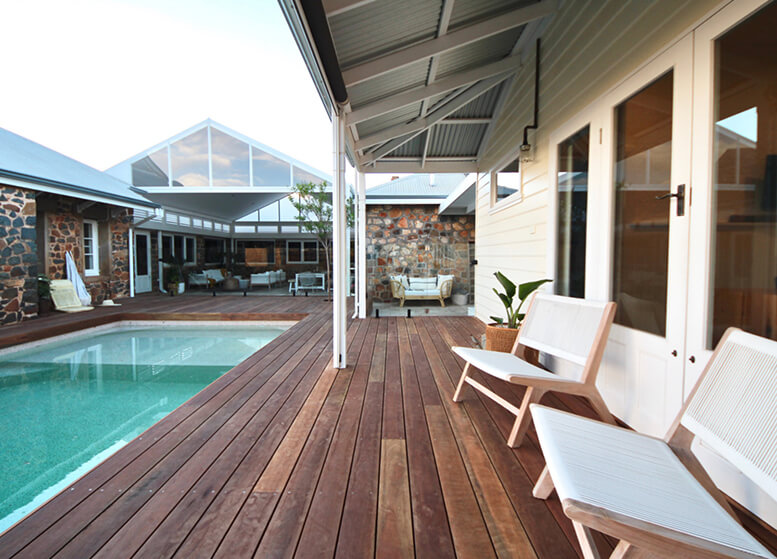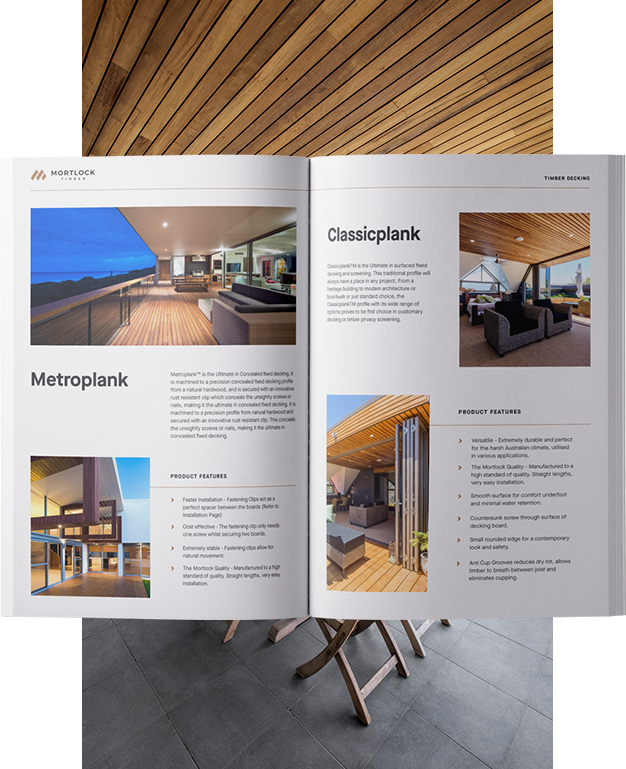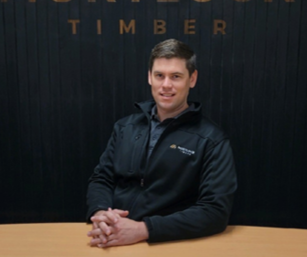Understanding Timber Movement and How to Work Around It

If you are planning to use timber cladding or decking for an upcoming project, it’s important you consider the effect movement can have on wood and how to protect your timber from damage in the long term.
In this article, we will explore the causes of timber movement, the problems it creates, and how you can work around it. We will go through the key factors you should consider when choosing your timber cladding or decking.
Why does timber move?
Wood is hygroscopic, which means its moisture content changes based on the relative humidity of the surrounding air. As humidity increases, the moisture content in timber increases too and the wood expands. As humidity decreases, the moisture content in the timber decreases, causing the wood to dry and shrink.
The cell structure of wood can be likened to several drinking straws that are glued together. Water in wood resides both within the “straws” (called free water) and in the cell walls of the “straws” (called bound water). If timber is under high exposure to moisture the straws fill with water which causes the timber to expand rapidly.
This is the reason why it’s important to seal the timber and the end grain correctly and cap off wall cavities during construction. Doing so will prevent prolonged water exposure to the cladding boards and reduce the amount or speed of timber movement.
What issues does timber movement create?
After timber has been installed it will look perfect. Over time, the amount of moisture in the timber will start to equalise with the amount of moisture in the surrounding environment to reach an equilibrium moisture content. This will cause the timber to expand or contract which can lead to joints slightly miss-aligning and minimal cupping.
This is not the fault of the product or installation, it is completely normal for timber to do this. The wood movement will occur slightly all year round with drier air in summer causing moisture loss and shrinkage, and damp conditions in winter causing expansion.
Of course, prolonged contact with moisture will cause excessive timber movement beyond normal expectations. For example, not installing temporary capping and leaving the wall cavity open to weather can cause extreme cupping. This is because wall cavities are not designed to drain large amounts of water. Another example is installing timber decking too low to the ground without sufficient drainage underneath the deck. Below are some common problems caused by timber movement when it hasn’t been planned for.
- Board cupping/peaking: when one side of the timber is in prolonged contact with moisture this causes boards to cup or peak at the board edges. Cupping will look like the edges of the boards are raised while dipping in the middle. Peaking looks similar, but instead of being caused by moisture movement in timber, it is caused by expansion pressure on the timber boards.
- Board creeping: if the correct expansion gap has not been used boards can expand and push the next board along. This can cause walls to be pushed out of line and cracks to appear on internal walls. It can also cause the boards to detach from the substrate.
Working around timber movement
As it’s not possible to eliminate timber movement, the next best solution is to design timber products that allow for the timber to move and avoid the problems it causes. Some common ways to allow for timber movement are listed below.
Allowing expansion gaps: timber cladding is not designed to be pushed up tight together as this does not allow for expansion. We recommend spreading the boards 1-2 mm apart rather than completely tight together depending on the climate of the area and time of the year. Timber decking should have the correct spacing between boards for the width of the board. Allowing for the correct expansion gaps allows for the boards to move without causing issues.
Sealing timber: timber end grain absorbs more moisture than the surface. It is important to use end seal trims where possible and oil the ends of the timber boards to reduce water ingress in the board ends. Regular maintenance is important for protecting the timber. Reapplying coats of oil on the surface of the boards every year or so will keep the boards hydrated and slow down the change in moisture content. Check with your timber supplier for the recommended frequency of re-oiling.
Waterproofing: it is important to waterproof the building to eliminate any excessive moisture getting trapped in areas like wall cavities. Timber exposed to moisture for prolonged periods of time will cause extreme movement.
Protect timber while storing: store timber out of the weather until it’s installed. When timber is in a pack it can trap water between the boards causing excessive movement and damage.
Use end matched boards: end matching means boards interlock on the ends reducing miss-alignment at joints. End matching is available for some of Mortlock’s products including Trendplank and Proplank. Find out more about end matching in our guide to end matched tongue and groove panelling.
Using low-movement timber species: different timber species move at different rates. Two examples of low-movement timbers are Pacific Teak and Burnt Ash. At Mortlock Timber, we can guide you through the process of choosing the correct wood species for your application.
Receive expert advice from Mortlock Timber
With years of experience under our belt, the team at Mortlock Timber can help you select the right materials and provide proper installation of timber products. We understand that wood shrinks and expands with seasonal changes, so we build our cladding and decking to account for timber movement. Discover our Trendplank range of concealed fixed timber cladding that is specifically designed to adjust for timber movement. This system has been successfully installed in seaside buildings where the humidity level is always changing and timber movement is greater. Check out our Scarborough Beach Pool project which displays our expertise with both timber cladding and decking.
View our pricing and product guide

We are committed to bringing you timber products that add value and endure for years to come, even in heavy traffic and harsh weather conditions. We understand the value of efficiency when it comes to installation and keeping hardwood timber costs down. That’s why we’ve spent decades perfecting our designs to make them easier to handle, less wasteful and more efficient to install. This efficiency allows us to offer you premier products that are more cost-effective so that you can experience greater savings on timber wall costs, timber ceiling costs, timber cladding costs and timber decking costs.
Download our Pricing and Product Guide for our complete hardwood timber price list including timber decking prices, timber wall prices, timber ceiling prices and timber cladding prices.
